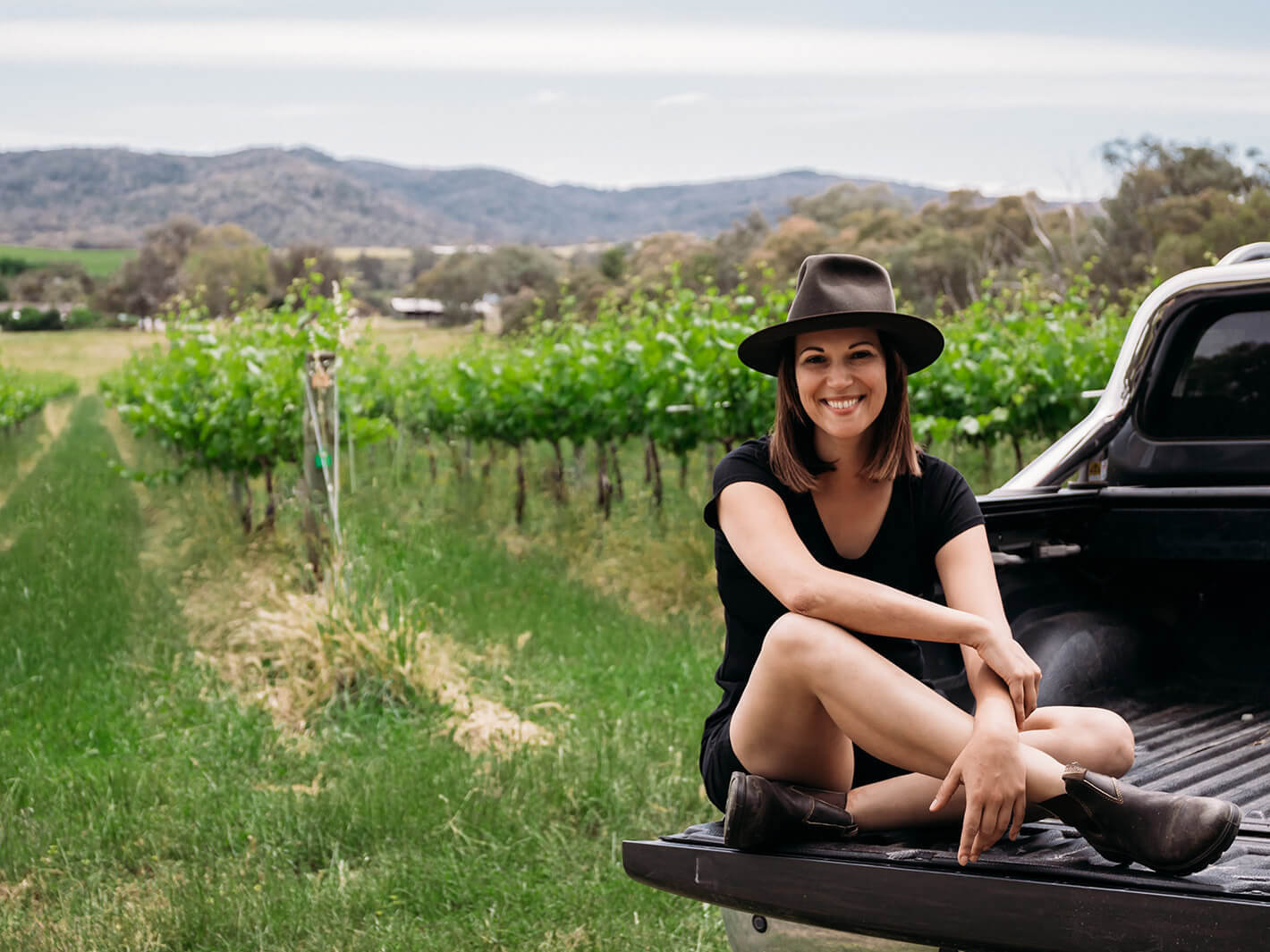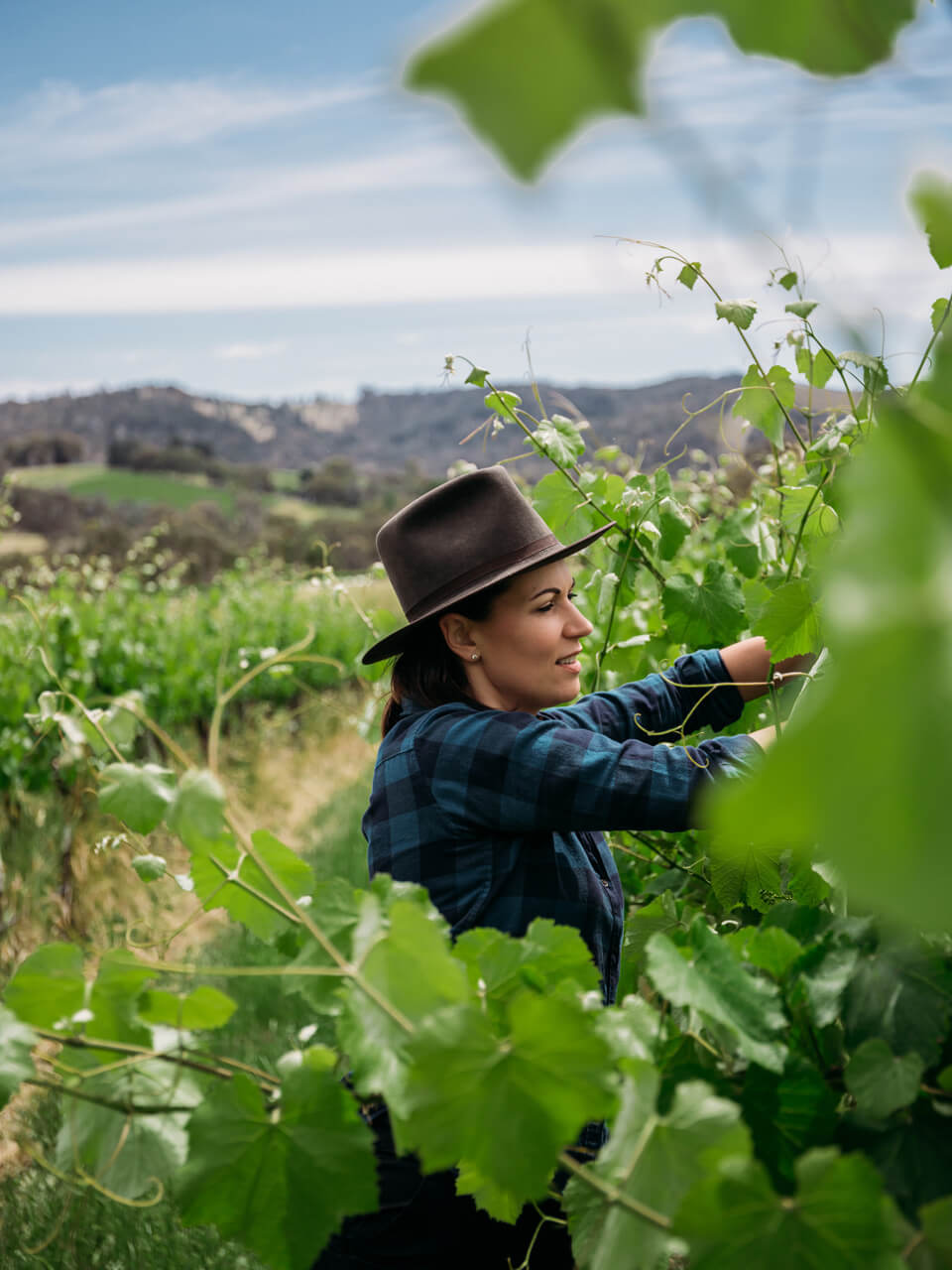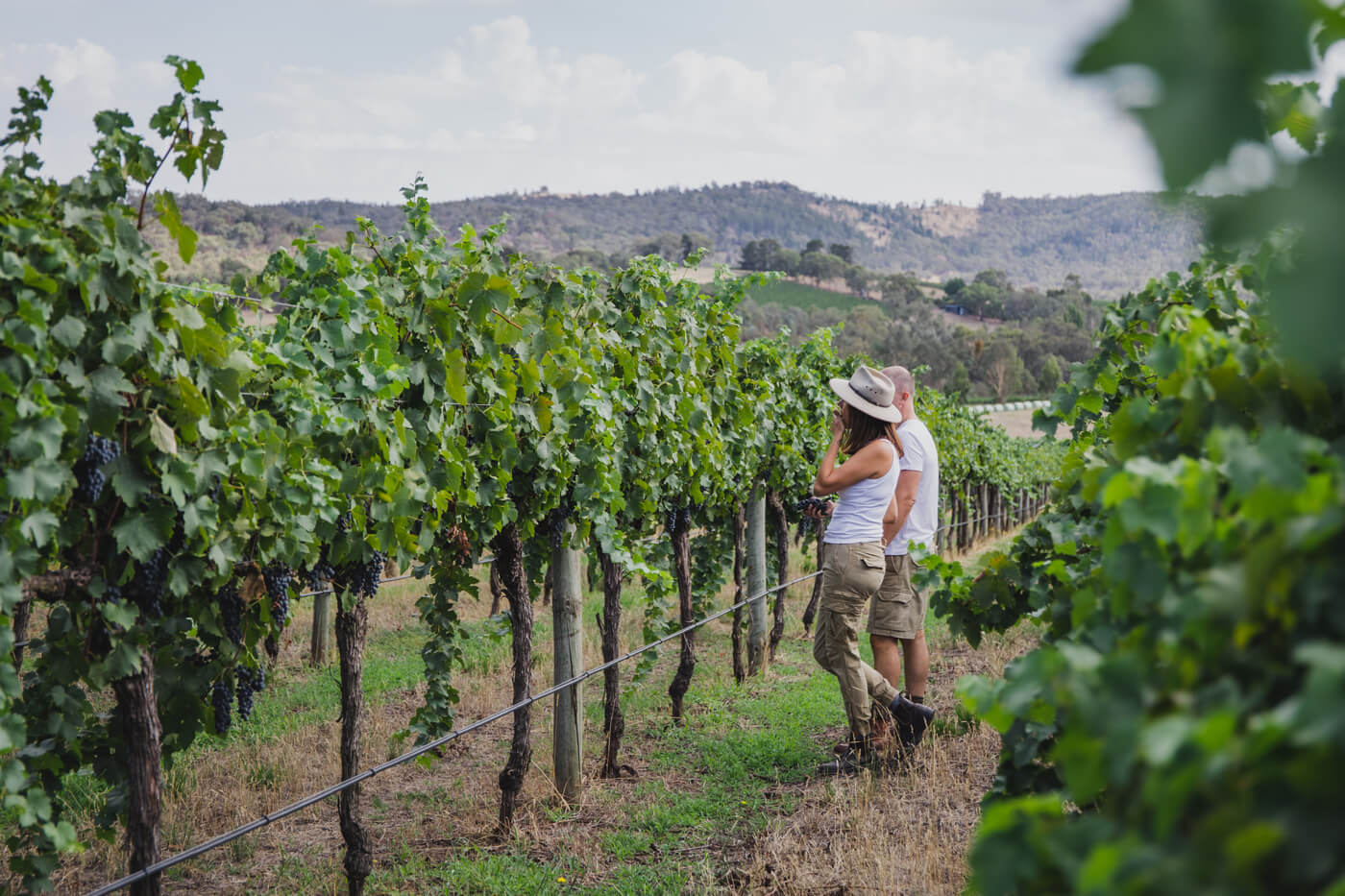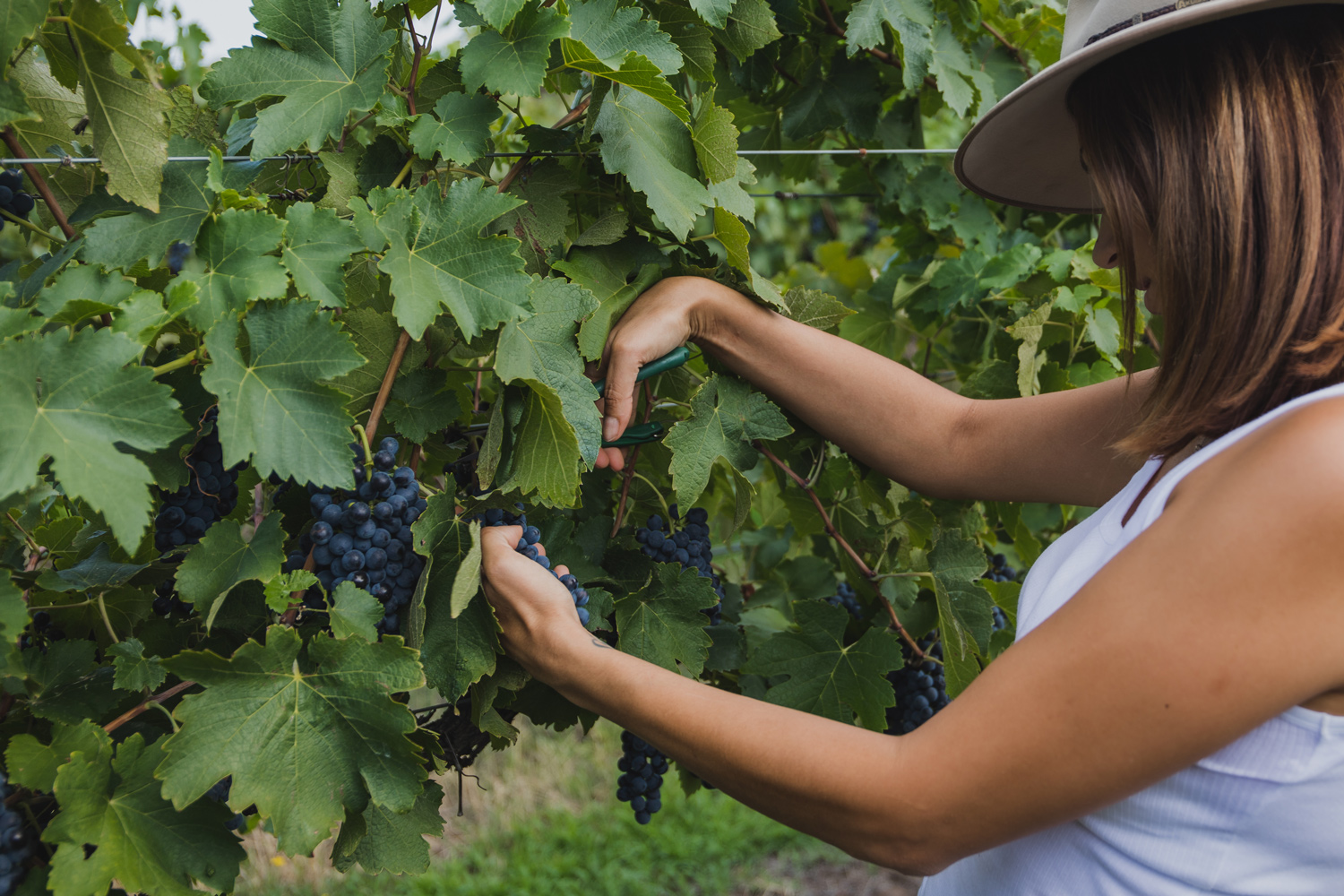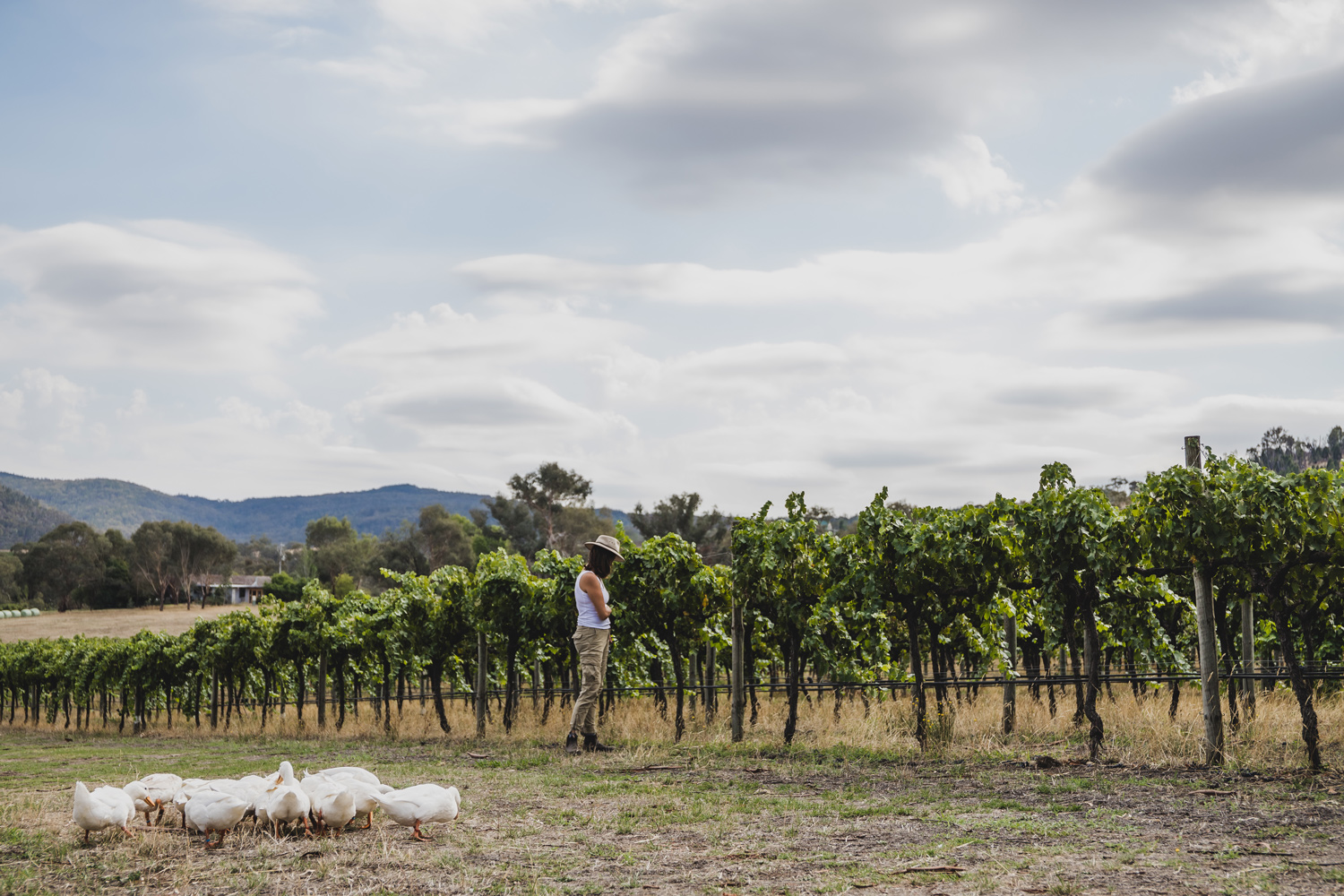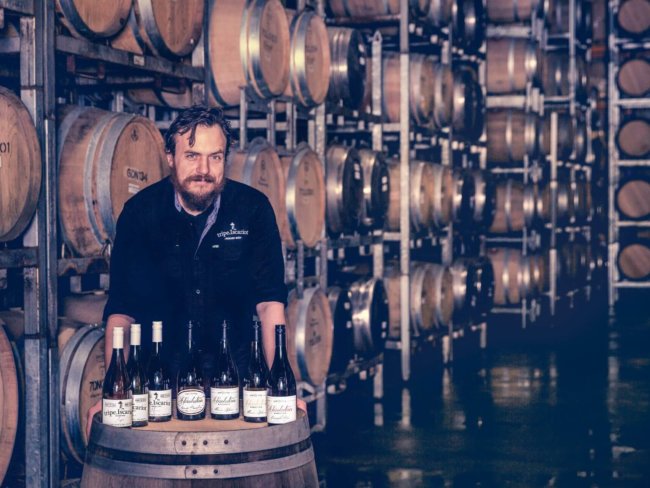Weathercraft is the realisation of Raquel Jones’ long-held dream to make wine from her own fruit. A project where the growing takes precedence, and the making simply follows. Eventually landing in Beechworth on an established vineyard, she makes elegant takes on local stars – chardonnay, shiraz, cabernet – but has replanted to map a future that is occupied substantially by Spanish varieties, principally tempranillo and albariño.
Jones didn’t follow a standard path to wine. No family vineyard. No winemaking studies followed by educational jaunts overseas. No multi-regional Blundstone-wearing vintage stints. None of that. Jones did, however, grow up helping her father grow fruit and vegetables for the family on their East Gippsland property, which fostered a life-long passion for growing things.
The parental encouragement, though, was very much to follow a professional career, not a horticultural one. That led to the law and a decade-long career in her own legal and finance business. And it was a successful career at that, but that passion for growing and a burgeoning interest in wine was always going to get in the way.
A bottle of wine brought to the family table had switched the lights on for Jones some years earlier. “Growing up at home, the focus was mostly on food, and the wines were homemade and pretty rough in retrospect. One Christmas, my brother-in-law brought over a Mount Mary ‘Quintet’ to share, and I was given a taste. I thought it was magic in a glass and it opened my eyes to how good wine could be,” she says. That appreciation was further developed by extensive travels through Europe, with a strong focus on wine regions, including Burgundy, the Rhône Valley, and in Spain, where her heritage lies.
Jones sold her business to allow the space and resources to study nutritional bioscience and chemistry, and later viticulture and oenology, all with the aim of one day owning a vineyard and being a vigneron. She and her husband, Hugh, could have bought grapes to start a label, but it was non-negotiable that they’d make wine from the ground up.
When the opportunity to buy an established vineyard in their favourite region of Beechworth came up, the pair jumped at the chance. It was an ideally situated and immaculately maintained property, set up in 1998 for premium wine production. The pair launched the Weathercraft label in 2016 and made their first wines in 2017.
Without the practical experience of making much wine herself, and still part way through her oenology studies at CSU, she enlisted the help of Mark O’Callaghan to advise in the winery, and the legendary Mark Walpole to help fine-tune the vineyard. That bridging advice helped the pair refine the vineyard practices and make the first wines, but today, the evolution of both the farming and winemaking is very much an in-house affair.
“We have a passionate belief in the term vigneron,” Jones says, “and the maxim that you can only make great wine from great grapes, holds true. So, we wanted to control the growing aspect, by owning the vineyard, to maintain fruit integrity through to bottle.”
Farming in a natural way, Jones encourages microbial soil life as a way of combatting pests and weeds. “All life begins and ends with the soil; it is a living, breathing system with an incredible ability to replenish and sustain life. The way in which we manage the soil, and its microbial populations determines not only the health and vitality of the vines we grow, but the quality of the wine we produce and the well-being of the environment in which we live.”
Jones began looking at natural ways to combat insects and disease, rather than using chemical controls. “We avoid using pesticides, herbicides, artificial fertilisers and other such inorganic methods. My bi-annual compost tea delivers 1,000 litres of active microbial goodness over the whole farm, not just the vineyard. Our flock of Pekin ducks is slowly growing to an army of 100 to flood the soil with nitrogen, phosphorus and potassium. Cover crops are planted in the mid-rows to fix nitrogen, soil is aerated to offset compaction, and we balance out the use of soluble and slow-release nutrients. Each approach works towards soil rehabilitation by increasing microbial activity, naturally unlocking and recycling nutrients.”
Jones makes pinot gris, chardonnay, shiraz, and a pale and dry shiraz-based rosé under the Weathercraft label. And while she is passionate about the elegant and refined expressions of these grapes, using traditional manual techniques and only French oak, she has an abiding desire to pursue growing and making Spanish varieties at the highest level, with albariño and tempranillo now part of the portfolio.
“My dream is to one day make a tempranillo that rivals Spain’s best,” says Jones. “When we bought our site, I undertook considerable research on soil composition, climate, including diurnal variation and various other factors. From a meso-climate perspective, I chose a mix of three clones from the Ribera del Duero region that perfectly suited our site. Most clones in Australia come from Portugal if not Valdepeñas, Rioja or the Toro region of Spain. To have Ribera clones is very special. For me, they produce a more elegant style of Tempranillo with gorgeous colour and unique fruit expression.”
The first tempranillo came from the 2019 vintage, which Jones made in a Joven style. “This young style is rarely experienced outside of Spain,” she says, “with examples of tempranillo in Australia often being big, bold, heavily tannic wines. I wanted to show people the diversity of the variety. My tempranillo has been a sell out, so this will continue, and my first reserve tempranillo was made in 2021.”
The current Tempranillo ‘J’ is a wine that Jones calls an “interesting alternative” to pinot noir. “The wine style is so different to what people are accustomed to with tempranillo so it can be a hand-sell at first, but once people are onto it, it flies. The idea of a tempranillo made like a pinot noir is one that evolved from a climate change perspective and a desire to champion Iberian varieties on Australian soil. It’s a win-win and tempranillo really is a climate change champion!”
Jones is also introducing garnacha and monastrell to the portfolio in the 2023 vintage. “This year will also be the year I make my GSM – a Beechworth first. I’m really excited for this wine.” Jones also makes a blend of albariño and chardonnay in amphora (‘Amphora Blanco’), a straight albariño, a whole bunch pinot gris raised in amphora (Amphora Àmbar) and a reserve shiraz from a select parcel of vines.
“My chardonnay and syrah will remain as staples and representative of the Beechworth region. My rosé made from shiraz – will evolve into a more Provençal style. I really want to stand out for my Iberian varieties here in Australia. After all, it’s my heritage and a legacy I can leave for my daughter.”
While her winemaking is always evolving, it is to the vineyard that Jones points to describe the biggest impact on her approach. “Particularly in the winery, I have experienced positive changes with the quality of fruit,” she says. “I don’t have to feed ferments because our nitrogen levels are really good, so yeasts are more reliable, fruit flavours are brighter, and the overall stability of the finished product foretells of impressive longevity. Over time, we have seen – and tasted – the difference that biologically healthy soil makes to the fruit we grow on our vineyard. It does take time, but the rewards are massive and we are excited for things to come.”

